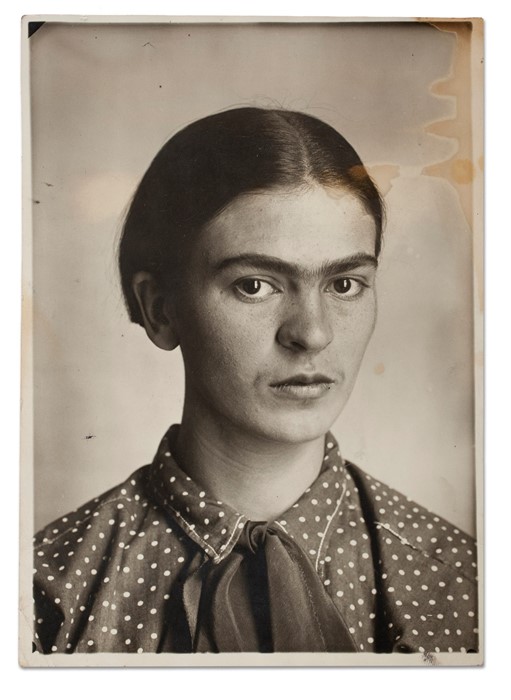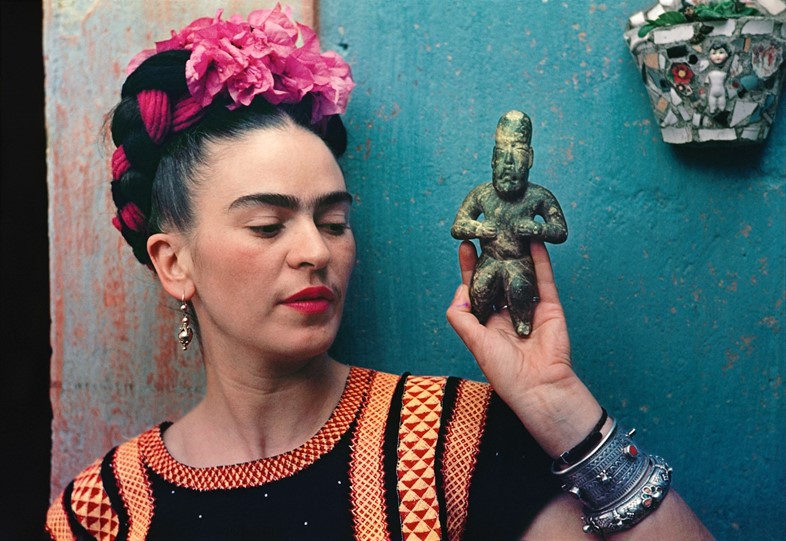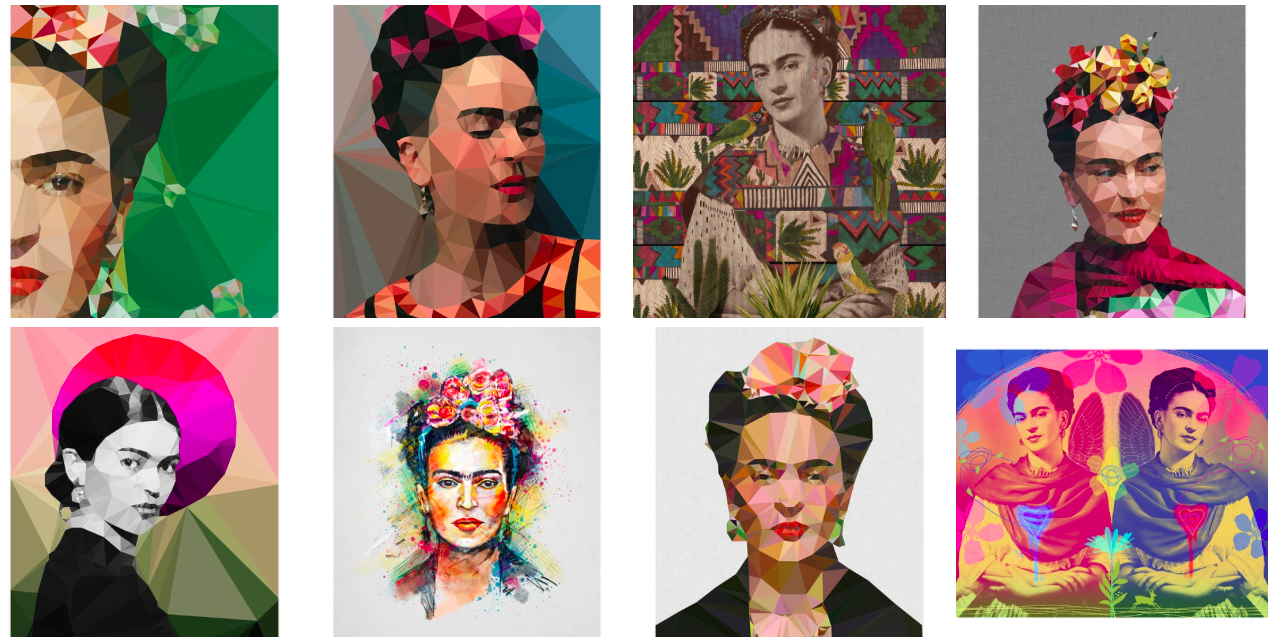Frida Kahlo: Making Herself Up is coming to the V&A
20th Apr 2018
Opening on June 16 at the V&A, Frida Kahlo: Making Her Self Up will explore how the artist constructed her identity through fashion
Text Dominic Cadogan
64 years after her death, Frida Kahlo still remains one of the most well known female artists – a testament to her work that explored spirituality, political ideas, and her struggle with disability, but still feels modern today. Beyond that, Kahlo’s image has been commodified, especially in fashion but also appearing on magnets, postcards and other souvenirs all over the world.
While there have been countless exhibitions dedicated to the artist’s work, Kahlo’s Blue House in Mexico City – that famously remained untouched for 50 years after her death – has been the only museum to host items that belonged to her – until now. Opening on June 16, the V&A will hold the first exhibition outside of her home country to feature Kahlo’s personal belongings.
Entitled Frida Kahlo: Making Her Self Up, the exhibition is curated by Claire Wilcox – who previously brought you Alexander McQueen: Savage Beauty, Radical Fashion, and the 2004 Vivienne Westwood exhibition. Not to mention founding the ongoing Fashion in Motion programme, that hosts catwalk shows within the museum.
Taking inspiration from an exhibition held at the Blue House in 2012, the V&A’s exhibit will be an expanded version – focusing on Kahlo’s wardrobe specifically. “I’m working closely with my co-curator, Circe Henestrosa, pooling our enthusiasm and expertise,” Wilcox told us. “We gave it a different title, Frida Kahlo: Making Her Self Up, but the themes of both shows are about the way Frida constructed her identity.”
Ahead of the opening, we speak with Wilcox on what to expect from Frida Kahlo: Making Her Self Up.
How did the idea for the exhibition come about?
Claire Wilcox: In 2012, there was an exhibition at the Blue House called Appearances Can Be Deceiving: The Dresses of Frida Kahlo, which showed some of Frida’s clothing and her prosthetics, and it was this exhibition upon which the V&A exhibition has been formed. I’m working with the curator of the same exhibition and what has been the most crucial thing is that these things are leaving Mexico City for the first time and coming to London and that’s really thrilling.

What can we expect when it opens in June?
Claire Wilcox: We have been able to bring a larger group of her clothing, jewellery, prosthetics, and medical gear alongside self-portraits and photographs. We are constructing the picture of Frida’s life – the way she constructed her identity through the actual objects.
It is a treasure trove showing her possessions: cosmetics, and facsimile of her diary, there are letters, sewing boxes – it’s so personal. To be able to see the garments that she painted herself wearing in her self-portraits – which for many years people just assumed had gone – is remarkable.
Was it daunting trying to convey Kahlo’s spirit outside of Mexico?
Claire Wilcox: The original exhibition took place in The Blue House – the museum, which was her home – and in the context of Mexico City, so there was the climate and all the implicit understanding of who Frida Kahlo was, which is hard to convey in rainy old London. It has been really great working with our exhibition designers, Tom Scutt and Gibson Thornley and our brief was not to try and recreate the Blue House, but to evoke the spirit of Frida and her Mexicanness through rational curatorial research.
You have worked on some huge fashion exhibitions, what was your approach to this one?
Claire Wilcox: We spent four to six months just researching photographs of Frida, and there are just so many. We chose photographs in a variety of ways to support the argument of the exhibition to demonstrate how she wore the clothes, which pieces she put together, how she wore the jewellery.
The photographs show how she looked at a certain event in time, what she was wearing with what. But on top of that, they have their own narrative which is of the emergence of women photographers in Mexico in that period of time. We’ve got photographs of Frida by Gisèle Freund the French photographer, Lola Álvarez Bravo the Mexican photographer, Tina Modotti the Italian-American photographer. Since Frida was so charismatic, she was photographed a lot. A lot of our research was into photography because it was blossoming in the 20s and 30s and a lot of really important photographers were going to Mexico in that time. Mexico attracted a liberal creative artistic community, who flocked to see Rivera and Frida Kahlo.
Why did you want to spotlight Frida Kahlo specifically?
Claire Wilcox: Frida was ahead of her time in many ways. She had a difficult life but she always conveyed a great sort of vitality and energy. She married the most famous painter in the world at the time, but wasn’t daunted, and continued to paint herself. She wasn’t afraid to dress differently to other women or to keep her facial hair – in fact, she celebrated it. She was a very active, intelligent player in the wider social circles that they moved in. There’s a modernity about her, which appeals.
If you look at photographs of other women from the time, you can definitely say ‘that’s 1930s’ from the fashions they’re wearing, but with Frida, you don’t get that sense at all. You get a sense of vitality and modernity. I don’t think it’s just about the fact that she’s wearing clothes that weren’t fashionable, It’s more to do with the way she took possession of her appearance, she constructed it, she made it speak for her belief in Mexico and Mexican culture, so it’s sort of political as well – it’s very multilayered.
“Frida was ahead of her time in many ways. She wasn’t afraid to dress differently to other women or to keep her facial hair – in fact, she celebrated it” – Claire Wilcox
 What can people expect from the exhibition?
What can people expect from the exhibition?
Claire Wilcox: It’s not entirely chronological, it starts off with her early years and goes into her relationship with her father, and the final gallery shows the clothing. Through the journey of the exhibition, we take a journey through aspects her life, so it’s broadly chronological, and the information we provide will hopefully offer an accumulation of gained knowledge through the journey of the exhibition for visitors.
If you go to an exhibition, you should come out the other side knowing a bit more about the subject. For us, the research process has allowed that and hopefully, the exhibition will do so as well. Kahlo can be read on so many different levels, and there’s been a lot of other wonderful exhibitions about her that look at her paintings and different aspects of her life, but this exhibition is very much about her clothing. It was an opportunity to look at how she dressed the way she did and why. That’s the core message of this exhibition.
Why did you want to focus on Kahlo’s fashion over her art or photography?
Claire Wilcox: Fashion is about adopting an identity. Selecting, editing, and affirming our sense of self or who we want to be, but with Kahlo, you never got a sense that she was trying to look like a film star. She was just herself, and that’s the tricky thing about her, her absolute confidence in the face she was presenting to the world, she’s controlling it all.
Her appearance was anti-fashion, so we offset in our minds our knowledge about what other women were wearing at the time with looking at what Frida was wearing. It’s completely evident in photographs that she looks different to other women in her social circle, even other Mexican women. You get an opposition to conformity immediately just by looking at one photograph of her in a group.
What are some of your favourite pieces in the exhibition?
Claire Wilcox: One of the nicest things is the jewellery, we’ve been working with a jewellery curator and it’s been interesting to understand more about how her jewellery was just like her clothing also composed of both modern and historical elements.
She was actually wearing pre-Columbian beads that had been unearthed during archaeological excavations from Jade, the sort of Jadeite beads have a hole drilled through them. Sometimes they were strung up and put on figurines in the graves and sometimes the beads would be placed in the mouths of the dead.
Frida assembled these necklaces herself using beads that came out of archaeological excavations in Mexico in the 20s and 30s and Diego Rivera collected pre-Columbian art, so he would’ve had access. I think those Jadeite necklaces are fascinating, we’ve got three in the exhibition, and they are completely unique because they were assembled by her.
For the full article as it appeared on DAZED click here
A fan of Frida Kahlo? We've got several prints in stock inspired by her art and life. Check them out!


